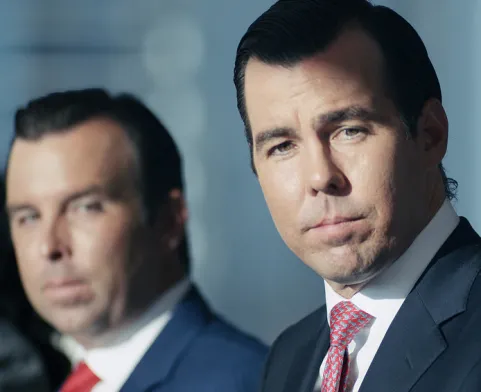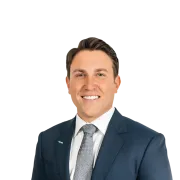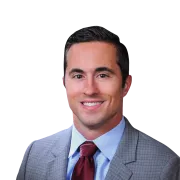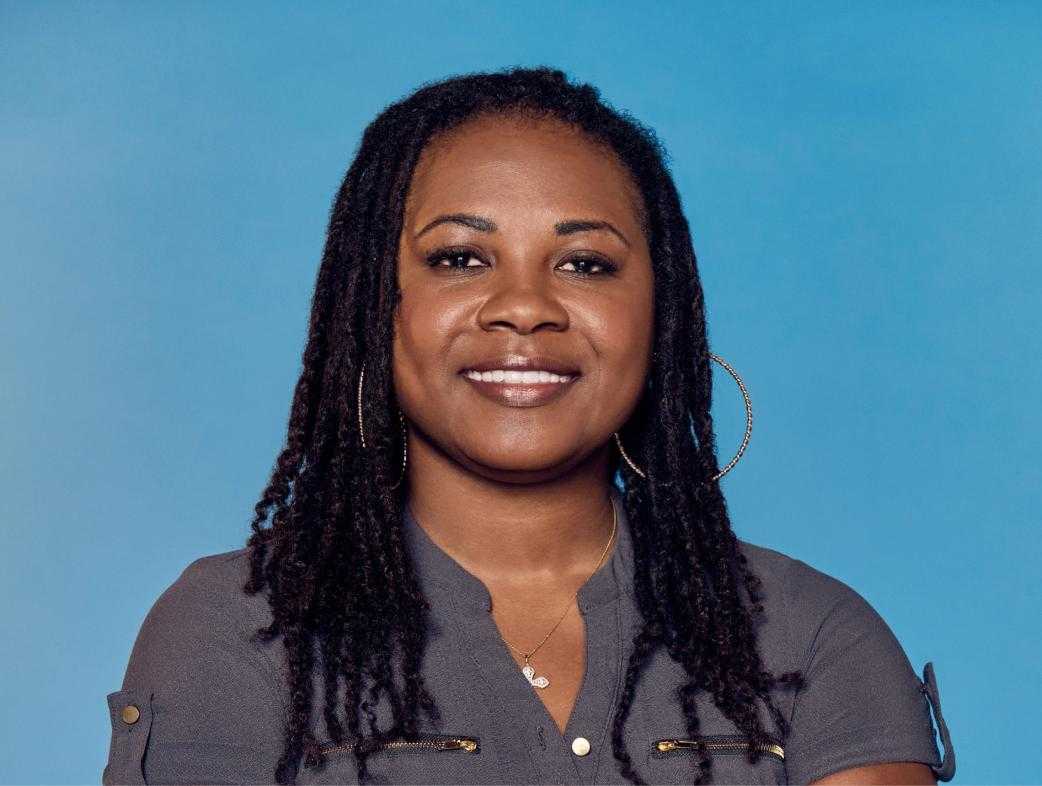
We know premises liability lawsuits.
When unsafe property conditions cause harm, we fight to hold owners responsible.
Start your claimThe attorney shown above may not be licensed in your state. To find an attorney licensed in your area, please visit our attorney page.

The attorney shown above may not be licensed in your state. To find an attorney licensed in your area, please visit our attorney page.
Meet Our Premises Liability Attorneys
From uncovering negligence to securing justice, our premises liability attorneys manage every aspect of your case. Focus on healing. We’ll take care of the rest.
The attorneys shown in these photos may not be licensed in your state. To find an attorney licensed in your area, please visit our attorney page.
Morgan & Morgan's Premises Liability Lawyers Make All the Difference
Don’t Be Lowballed by an Insurance Company
Covering All Types of Premises Liability Cases
Proven Experience, Powerful Results
Legal Help with No Upfront Costs
Results may vary depending on your particular facts and legal circumstances.
Our Results
Results may vary depending on your particular facts and legal circumstances.
Ways We Can Help
Swimming Pool Accidents
Amusement Park Accidents
Concert Injuries
Slips and Falls
Negligent Security
Elevator/Escalator Accidents
Dog Bites
In Their Words
Based on select nationwide reviews.
Premises liability cases need three things.
Injury or damages
Negligence by the property owner
Enough insurance coverage
What's a premises liability case worth?
Watch Morgan & Morgan attorneys explain how case value is calculated.

The attorneys shown in this video may not be licensed in your state. To find an attorney licensed in your area, please visit our attorney page.
8 Steps to Take if You Have a Premises Case
If you've suffered an injury due to unsafe conditions on someone else's property, following these 8 steps could help strengthen your claim.
Fighting For the People
Backed by America’s Largest Injury Law Firm.
$25 Billion
Recovered for clients
nationwide700,000+
Clients and families
served1,000+
Attorneys across
the country1
Click may change your life

The attorney featured above is licensed in Florida. For a full list of attorneys in your state please visit our attorney page.
Results may vary depending on your particular facts and legal circumstances.
What might be covered by a premises case?
Medical Bills
Lost Wages
Pain and Suffering
Wrongful Death
Property Damage
Rehabilitation Costs
Learn More
Injured and not sure what to do next?
We'll guide you through everything you need to know.
What is a premises liability lawsuit?
Premises liability law holds property owners and occupiers legally responsible when someone is injured due to unsafe or defective conditions on their property. These laws are rooted in negligence, meaning that owners must take reasonable care to ensure their property is safe for visitors.
Common premises liability cases involve slip and falls, dog bites, inadequate security, structural hazards, and more. Whether the property is residential, commercial, or public, the key question is whether the property owner took reasonable steps to prevent foreseeable harm.
What should I do immediately after a premises liability accident?
The moments after an accident can be overwhelming, but taking the right steps can protect your health and your legal claim:
- Seek Medical Attention: Your health comes first. Even if injuries seem minor, get evaluated by a healthcare professional.
- Report the Incident: Notify the property owner, manager, or another authority figure about the accident. Ask for a written report if possible.
- Document Everything: Take photos of the hazardous condition, your injuries, and the surrounding area. If there were witnesses, gather their contact information.
- Avoid Giving Statements: Don't admit fault or downplay your injuries. Stick to the facts when discussing the incident.
- Contact Morgan & Morgan: A premises liability attorney can protect your rights and guide you through the next steps.
How is liability determined in a premises liability case?
Determining liability means proving that the property owner or person in charge of the property was negligent. Typically, this involves showing that:
- The owner knew or should have known about the dangerous condition.
- The owner failed to repair or warn about the hazard.
- You suffered injuries as a direct result of that negligence.
In many situations, establishing negligence requires a thorough investigation and strong evidence.
What are the key legal elements of premises liability?
For a successful premises liability claim, you generally must prove:
- Duty of Care: The owner owed you a duty to keep the premises safe.
- Breach of Duty: The owner failed to meet that duty through negligent action or inaction.
- Causation: The unsafe condition directly caused your injury.
- Damages: You suffered measurable harm, such as medical bills, lost income, or pain and suffering.
Can I sue a landlord for injuries caused by poor property maintenance?
Yes. Landlords have a legal obligation to maintain common areas and address known or hidden dangers.
However, landlord liability often depends on whether:
- They had notice of the hazard.
- They had a reasonable amount of time to fix the issue.
- The injury occurred in a common area under their control.
What are the common types of premises liability cases?
Premises liability covers a wide range of accidents, including:
- Slip and Fall Accidents: Wet floors, icy sidewalks, and uneven surfaces.
- Negligent Security: Assaults due to a lack of lighting or security measures.
- Dog Bites: Unprovoked attacks by poorly controlled pets.
- Swimming Pool Accidents: Drownings or injuries due to a lack of barriers or supervision.
- Structural Hazards: Collapsing decks, unsafe staircases, or broken elevators.
- Retail Store Accidents: Falling merchandise, slippery aisles.
- Amusement Park Injuries: Ride malfunctions or unsafe grounds.
What are the common defenses in premises liability cases?
In a premises liability case, the injured party (plaintiff) must prove that the property owner or occupier was negligent. However, defendants often use a range of legal defenses to reduce or eliminate their liability. Understanding these defenses can help injured individuals better anticipate challenges during their case. Here are some of the most common defenses in premises liability lawsuits:
Lack of Knowledge (No Actual or Constructive Notice)
One of the most frequently used defenses is that the property owner or occupier did not know and could not reasonably have known about the dangerous condition that caused the injury.
Actual notice means the owner was directly aware of the hazard. Constructive notice means the hazard existed long enough that the owner should have discovered it through reasonable inspections.
If a defendant can show that they had no knowledge of the danger and no reasonable opportunity to discover and fix it, they may avoid liability.
Open and Obvious Danger
Property owners often argue that the hazardous condition was so open and obvious that a reasonable person would have noticed and avoided it.
Courts sometimes find that owners are not liable for injuries caused by hazards that were clearly visible, such as:
- A large, brightly painted hole
- Obvious ice patches
- Clear warning signs around a construction zone
However, this defense is not absolute; in some jurisdictions, even open and obvious dangers must be reasonably addressed if they pose significant risks.
Comparative or Contributory Negligence
Defendants often claim that the plaintiff’s own negligence contributed to their injury.
In comparative negligence states, damages are reduced by the percentage of the plaintiff's fault. In contributory negligence states (few in number), if the plaintiff is even slightly at fault, they may be barred from recovering anything.
For example, if a plaintiff was texting while walking and failed to notice a hazard they otherwise would have seen, their compensation could be reduced or denied.
Assumption of Risk
If the plaintiff knowingly exposed themselves to a known danger, the defendant may argue that the plaintiff voluntarily assumed or “incurred” the risk.
This defense is common in situations such as:
- Entering areas marked "Employees Only"
- Ignoring posted warnings like “Wet Floor” signs
- Participating in inherently risky activities like amusement park rides
Successful assumption of risk arguments require the defendant to prove that the plaintiff had actual knowledge of the danger and willingly accepted it.
Lack of Causation
The property owner may argue that their alleged negligence was not the cause of the plaintiff’s injury.
For example, if someone trips and falls because of their own medical condition, rather than a property defect, the owner might not be legally responsible.
A break in the chain of causation can absolve a defendant of liability altogether.
No Duty Owed
Defendants sometimes argue that they did not owe the injured person a duty of care under the law.
For instance, trespassers are generally owed only minimal duties (such as not setting traps).
In some cases, certain parts of the property may be closed off to the public, limiting the owner’s duty to maintain those areas.
Whether a duty existed often depends on the injured person's status on the property (invitee, licensee, or trespasser).
Third-Party Fault
Sometimes, defendants argue that a third party, not the property owner, created the dangerous condition or was primarily responsible for the injury.
Examples include a customer spilling liquid on a store floor moments before another customer slips, or a contractor leaving behind dangerous tools or debris on a property.
In these cases, the owner may claim that they had no reasonable opportunity to discover or fix the hazard before the accident occurred.
Recreational Use Immunity
Some states provide immunity to property owners who open their land to the public for recreational purposes without charging a fee.
Under these laws, owners are generally not liable for injuries unless they willfully or maliciously fail to warn about hidden dangers.
This defense often applies to cases involving parks, trails, and other public outdoor spaces.
What are the premises liability laws in my state?
Premises liability laws vary from state to state, and understanding the differences is crucial for anyone pursuing a claim. While the basic principle that property owners must keep their premises reasonably safe is similar across the U.S., each state has its own specific rules about duty of care, comparative fault, and how damages are awarded.
Here's a preview of how premises liability works in some of the key states where Morgan & Morgan operates:
Florida
Duty of Care: Florida law categorizes visitors as invitees, licensees, or trespassers, each owed different levels of care:
- Invitees (such as customers in a store) are owed the highest duty. Property owners must keep the property reasonably safe, correct dangers, and warn of any known hazards.
- Licensees (such as social guests) must be warned of known dangers, but owners do not have a duty to inspect for hidden problems.
- Trespassers are generally owed only a duty to avoid intentional harm, although special rules apply to children under the "attractive nuisance" doctrine (such as unsecured pools).
Comparative Negligence: Florida follows a modified comparative negligence rule (updated as of 2023). If you are found to be more than 50% responsible for your injury, you cannot recover damages.
Georgia
Duty of Care: Georgia also differentiates between invitees, licensees, and trespassers:
- Property owners owe a duty of ordinary care to invitees.
- For licensees, the duty is only to avoid willful or wanton injury.
- For trespassers, owners must avoid causing intentional harm.
Comparative Negligence: Georgia uses a modified comparative negligence system. If a plaintiff is found 50% or more at fault, they cannot recover any damages.
California
Duty of Care: California law is somewhat more straightforward:
- Property owners and occupiers owe a duty of reasonable care to anyone lawfully on their property, regardless of classification (invitee/licensee).
- Even trespassers may have limited protection if an owner’s actions were willfully harmful.
Comparative Negligence: California follows pure comparative negligence. This means that even if you are 99% responsible for your own injury, you can still recover 1% of the damages.
The state where your accident occurred can significantly affect your ability to file a claim, the strategies used to prove negligence, and the amount of compensation you may be eligible to receive. Factors like comparative negligence laws and duty of care standards can heavily influence the outcome of your case.
At Morgan & Morgan, we have attorneys licensed in multiple states who understand the nuances of local premises liability law, and we use that knowledge to build the strongest possible cases for our clients.
What are high-risk locations for premises liability accidents?
While a premises liability accident can happen almost anywhere, certain locations carry a much higher risk due to their design, usage, and foot traffic. Understanding where accidents are more likely to occur can help individuals stay vigilant, and it highlights the heightened duty of care that property owners in these settings must uphold.
Here are some of the most common high-risk locations for premises liability accidents:
Retail Stores and Shopping Malls
Stores and malls see heavy daily foot traffic, increasing the risk of hazards like:
- Spilled liquids creating slippery floors
- Obstructed aisles
- Poorly maintained escalators or elevators
- Falling merchandise from improperly stacked shelves
Business owners must regularly inspect and maintain their premises to protect shoppers from foreseeable dangers.
Grocery Stores
Grocery stores are notorious for slip and fall accidents caused by:
- Spilled food and liquids
- Wet floors from cleaning
- Refrigeration leaks
Because customers frequently handle perishable and liquid products, grocery store owners must act quickly to clean spills and provide warning signs when necessary.
Apartment Complexes and Rental Properties
Landlords have a duty to maintain common areas, including:
- Stairwells
- Parking lots
- Hallways
- Entryways
Poor lighting, broken handrails, loose carpeting, and icy sidewalks can all lead to serious injuries for tenants and guests.
Hotels and Resorts
High guest turnover and extensive facilities (like pools, spas, and gyms) create many potential hazards, including:
- Slippery surfaces around pools
- Broken furniture
- Inadequate security leading to assaults or thefts
Hotel operators must proactively maintain a safe environment for their guests.
Restaurants and Bars
Food and drink spills are common in restaurants and bars, creating slipping hazards. Other risks include:
- Poorly lit walkways
- Loose flooring
Owners must regularly monitor and address these risks, especially during busy hours.
Amusement Parks and Entertainment Venues
Amusement parks, concert arenas, and theaters must ensure:
- Ride safety and proper maintenance
- Adequate crowd control measures
- Safe pathways and emergency exits
Given the size of the crowds and the activities involved, even minor oversights can lead to major injuries.
Construction Sites (When Open to the Public)
Construction zones open to the public or improperly secured can create hazards such as:
- Falling debris
- Unmarked excavation holes
- Tripping hazards from tools or materials
Property owners and contractors must maintain strict safety protocols and clear signage.
Parking Lots and Parking Garages
Parking areas often have hazards that lead to premises liability claims, including:
- Poor lighting that can contribute to assaults or falls
- Potholes or uneven pavement
- Inadequate signage leading to accidents
Property owners must inspect and maintain these areas regularly, especially at night.
Public Parks and Recreational Facilities
Parks and playgrounds can present dangers such as:
- Broken playground equipment
- Uneven walking trails
- Poorly maintained sports fields
Municipalities or private owners may be held liable if they fail to address known hazards.
Healthcare Facilities (Hospitals, Nursing Homes, and Clinics)
Patients and visitors in medical environments are particularly vulnerable to injury. Common hazards include:
- Wet floors
- Improperly maintained medical equipment
- Unsafe patient handling practices
Healthcare providers have a heightened duty to ensure their premises are safe for all visitors and residents.
When an accident happens in one of these high-risk locations, it may reflect a property owner’s failure to uphold their legal duty. Knowing that some environments are inherently riskier, owners and managers are expected to take even greater precautions.
At Morgan & Morgan, we have extensive experience handling cases involving injuries at all types of high-risk properties. We fight to hold negligent property owners accountable and seek maximum compensation for our clients.
What is the role of evidence in premises liability cases?
In a premises liability case, evidence is everything. Strong evidence can mean the difference between a successful claim and a denied one. It’s not enough to simply say you were injured on someone else’s property; you must prove that the property owner or manager was negligent and that their negligence directly caused your injuries.
Here’s the role evidence plays and why it’s so important to your case.
Establishing the Hazard
First, you must prove that a dangerous condition existed on the property. This can include things like:
- Wet or slippery floors
- Broken staircases
- Poor lighting
- Unsecured cables or obstacles
- Lack of proper security
Evidence that documents the hazard, especially if captured immediately after the accident, strengthens your claim significantly.
Examples of evidence:
- Photos or videos of the scene
- Maintenance logs showing overdue repairs
- Eyewitness statements confirming the dangerous condition
Proving Property Owner Knowledge
In most premises liability cases, it’s not enough to show that a hazard existed. You must also prove that the property owner:
- Knew about the danger (actual knowledge), or
- Should have known through reasonable inspection (constructive knowledge).
Evidence that can prove knowledge includes:
- Surveillance footage showing the hazard existed for an extended time
- Incident reports or prior complaints about the same hazard
- Employee testimonies admitting awareness of the problem
- Lack of routine inspections documented by the business
The longer the hazard existed without being addressed, the stronger the inference that the property owner was negligent.
Linking the Hazard to Your Injuries
It’s essential to demonstrate that the dangerous condition directly caused your injury, not a pre-existing condition or unrelated accident.
Key evidence includes:
- Medical records documenting your injuries and timing
- Expert testimony (such as doctors or accident reconstruction specialists)
- Personal testimony about how the injury happened
Consistency between your injury report and the hazardous condition is crucial.
Demonstrating the Extent of Your Damages
Beyond proving that you were injured, you’ll need to show the full extent of your physical, emotional, and financial damages. This impacts how much compensation you can recover.
Evidence may include:
- Medical bills
- Physical therapy or rehabilitation records
- Wage loss documentation (pay stubs, employer letters)
- Expert opinions about long-term impacts (like permanent disability)
- Journals or diaries showing pain, suffering, or mental anguish
The more detailed and organized your evidence, the easier it is to demonstrate the true cost of your injury.
Defending Against Comparative Fault Claims
In many states, property owners may argue that you were partially responsible for your injury (for example, by ignoring warning signs or acting carelessly). Gathering evidence that shows you acted reasonably can help protect your claim.
Helpful evidence includes:
- Clear photos showing lack of warning signs
- Testimony that there were no barriers or cones around a hazard
- Witness statements affirming your careful behavior
What is the statute of limitations for premises liability claims?
The amount of time you have to file a personal injury claim, known as the statute of limitations, varies by state and the specifics of your case. However, some exceptions may apply, such as in cases involving minors, government entities, or when the injury wasn’t discovered right away.
It's important to file your claim as soon as possible to preserve your legal rights. Failing to file within the statute of limitations could result in your case being dismissed, meaning you may lose the opportunity to recover compensation for your injuries.
Since deadlines can vary by state and situation, it's best to consult with a personal injury attorney as soon as possible after the incident to understand the specific timeline for your case. An attorney can help ensure your claim is filed correctly and on time.
Who is liable for short-term rentals?
If you're injured at an Airbnb, VRBO, or other short-term rental, liability can be complex. Possible liable parties include:
- The property owner or host.
- The rental company, if negligence can be proven (rare).
- Third parties, such as cleaning or maintenance crews.
Many short-term rental hosts carry insurance to cover guest injuries, but coverage limits and exclusions may apply. Filing a claim quickly and investigating insurance coverage is critical.
What are the long-term impacts of premises liability injuries?
Premises liability accidents can result in devastating, long-term effects, including:
- Traumatic brain injuries (TBIs)
- Spinal cord injuries
- Broken bones requiring surgery
- Chronic pain or disability
- Emotional trauma and PTSD
- Lost earning capacity
- Need for ongoing medical treatment
These impacts are considered when calculating the value of your claim, making it vital not to settle too quickly.
How do I prove that a property owner was negligent?
In a premises liability case, proving negligence is a critical component of successfully holding a property owner liable for your injuries. If you were injured on someone else’s property, you must establish that the property owner’s actions or failure to act were the direct cause of your accident. This typically involves demonstrating that the property owner was negligent in maintaining the property or addressing hazards.
Negligence is based on the idea that property owners have a duty of care to maintain their premises in a reasonably safe condition. If they fail to uphold that duty and someone gets hurt as a result, they can be held legally responsible.
Here’s what’s needed to prove that a property owner was negligent:
1. Establish the Property Owner’s Duty of Care
The first step in proving negligence is to establish that the property owner had a duty of care to ensure the property was safe. In most premises liability cases, property owners or occupiers owe a duty to visitors (invitees, licensees) to maintain the premises and prevent harm. This duty of care may involve:
- Regularly inspecting the property for hazards
- Fixing any defects, or at least warning of them
- Providing adequate lighting, signage, or barriers to protect visitors from harm
In general, the level of care owed will depend on the status of the person injured (whether they were a guest, employee, or trespasser) and the type of property involved. For example, a store owner has a higher duty of care to a customer (invitee) than to a trespasser.
2. Prove the Property Owner Breached Their Duty of Care
Once the property owner’s duty is established, you must prove that they breached that duty. A breach of duty means that the property owner failed to act in a way that would be considered reasonable to prevent harm. For example:
- Failing to repair a broken staircase
- Ignoring a water spill in an aisle for an extended period of time
- Not posting proper signage to warn of a known hazard (e.g., wet floors)
- Allowing debris to accumulate and obstruct walkways
To establish a breach, you’ll need evidence that the property owner either created the hazardous condition, knew about it but didn’t fix it, or should have known about it through regular inspections. Common evidence to show this includes:
- Maintenance and inspection records
- Photos or videos of the hazard
- Testimony from witnesses who saw the dangerous condition or heard complaints about it
- Expert testimony (from an engineer or safety professional)
3. Demonstrate That the Hazard Caused Your Injury
Next, you must prove that the hazardous condition directly caused your injury. This requires showing a clear link between the hazard (such as a slippery floor or broken step) and your injury. In legal terms, this is called causation.
For example, if you slipped on a wet floor in a grocery store, you must demonstrate that the wet floor caused you to fall and injure yourself, rather than some other factor (like your own carelessness). Evidence that can support causation includes:
- Medical records that link your injury to the accident
- Testimony from medical professionals about the nature and cause of your injuries
- Witnesses who saw the accident happen or can testify that the hazard was present at the time
- Surveillance footage showing the accident unfolding
In some cases, expert testimony may be needed to explain how the hazard directly led to your injury. For example, a safety expert could testify that a failure to maintain proper lighting directly contributed to a fall.
4. Prove the Injury Was Foreseeable
Negligence also involves proving that the property owner could have reasonably foreseen that their actions or inaction would cause harm. This is important because if the risk of injury wasn’t foreseeable, the property owner may not be considered negligent.
For example, a store owner may be considered negligent if they failed to clean up a spilled drink in a high-traffic area, as it’s foreseeable that someone could slip and fall.
To prove foreseeability, you’ll need to show that similar accidents have occurred before or that the property owner should have been aware of the risk.
5. Prove That You Suffered Actual Damages
Finally, to recover compensation for your injuries, you must show that you suffered actual damages as a result of the property owner’s negligence. These damages can include:
- Medical expenses (hospital bills, rehabilitation costs)
- Lost wages due to time off work
- Pain and suffering for physical or emotional distress
- Property damage (in the case of an accident involving damage to personal property)
You’ll need to provide documentation of these damages. For medical expenses, this could be hospital bills, prescriptions, and therapy costs. For lost wages, you may need pay stubs or letters from your employer.
What if an accident happens on a rental property?
In rental property cases, liability can fall on:
- The landlord for hazards in common areas.
- The tenant for hazards within their leased space known to the landlord but unknown to the tenant
- A third party, such as a maintenance company, if they contributed to the unsafe condition.
Investigating who had control over the dangerous condition is key to pursuing the right party for compensation.
How long does a premises liability case take to settle?
Settlement timelines can vary greatly depending on the specifics of your case. Every claim is unique and riddled with multiple contributing factors. That’s why your best option is to work with an experienced attorney who can investigate these nuanced details and interpret them into value for your claim.
Generally, simple cases may settle in a few months, whereas complex cases involving severe injuries, disputed liability, or multiple defendants can take a year or more. Cases that go to trial could take two to three years, depending on the court’s schedule.
At Morgan & Morgan, we prepare every case as if it’s going to trial to maximize your leverage during settlement negotiations. When you get started with a free case evaluation, our helpful legal team can advise you on a timeline estimate after reviewing your case.
Can I still file a claim if I was partially at fault for my injury?
Yes! Many states, including Florida, Georgia, and California, follow comparative negligence laws. This means your compensation is reduced by your percentage of fault.
For example, if you’re found 20% at fault, your damages would be reduced by 20%.Even if you think you share some blame, don't assume you can't recover. Talk to an experienced attorney who can help minimize your share of liability.
Do I have to pay for a consultation about a premises liability claim?
No. Consultations at Morgan & Morgan are completely free. We believe everyone deserves access to legal advice, regardless of their financial situation.
Hiring one of our premises liability lawyers is easy, and you can get started in minutes with a free case evaluation on our site or by phone.
Who will be on my case team?
When you hire Morgan & Morgan, you don’t just hire a lawyer, you hire the largest personal injury law firm in the country with an army of over 1,000 lawyers and offices in all 50 states and Washington, D.C.
Your case will be handled by a dedicated team of professionals, including personal injury lawyers, paralegals, and support staff. You will be assigned a care team that includes a primary attorney who will oversee your case and ensure you receive personalized attention throughout the process.
When do I meet with my premises liability attorney?
We love talking to our clients. You will primarily communicate with your Case Manager via telephone and email, and if you would like to speak directly with your attorney via telephone, video conference, or in-person meeting, we will make that happen by scheduling a time.
How much does it cost to hire experienced premises liability attorneys at Morgan & Morgan?
Morgan & Morgan’s lawyers work on a contingency fee basis, meaning that there are no upfront fees or expenses until your case comes to a successful conclusion. That’s right—the Fee Is Free™, and you only pay if we win.
Our fee is a percentage of the settlement or verdict amount, ensuring we are motivated to achieve the best possible outcome for you.
How much does it cost to hire Morgan & Morgan?
Morgan & Morgan’s lawyers work on a contingency fee basis, meaning that there are no upfront fees or expenses until your case comes to a successful conclusion. That’s right—the Fee Is Free™, and you only pay if we win.
Our fee is a percentage of the settlement or verdict amount, ensuring we are motivated to achieve the best possible outcome for you.
How can a premises liability lawyer help? Why should I hire Morgan & Morgan?
At Morgan & Morgan, our team of experienced attorneys has successfully represented countless clients in similar situations, securing millions in compensation. As the largest personal injury law firm in the country with over 1,000 lawyers nationwide, we have the resources, knowledge, and dedication to fight for your rights.
We work on a contingency fee basis, meaning you won’t have to pay unless we win your case. Morgan & Morgan believes justice should be accessible to all, so our motto is the Fee Is Free™—you only pay if we win. From the initial free consultation to the final verdict, you never pay a dime out of pocket.
Don’t bear the burden of your injuries on your own because of someone else’s negligence. Contact Morgan & Morgan today for a free case evaluation to learn more about your legal options.























